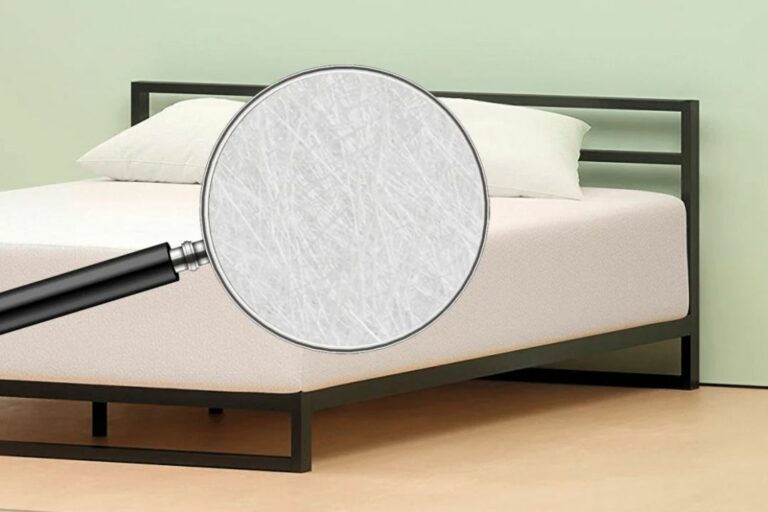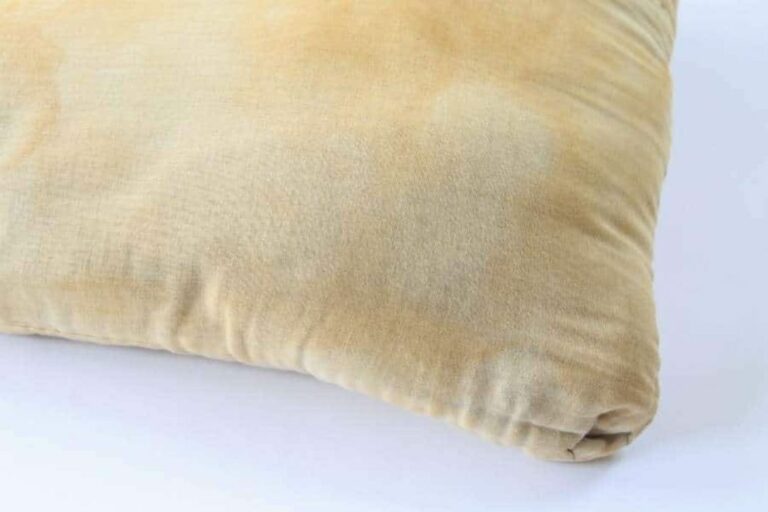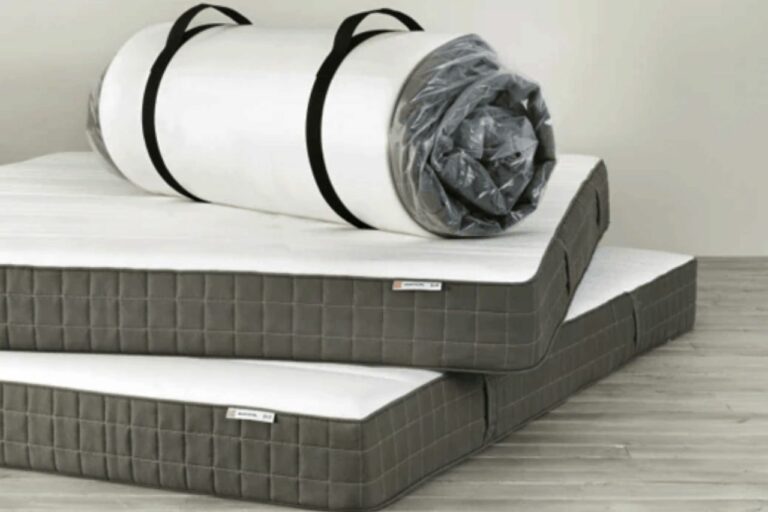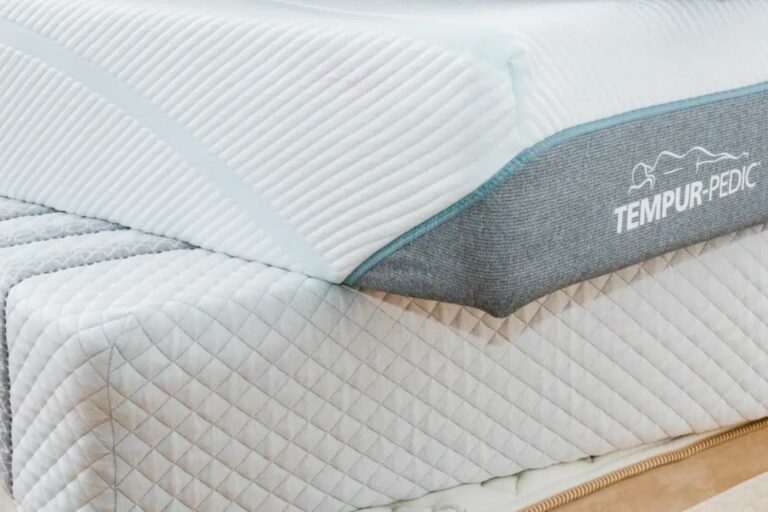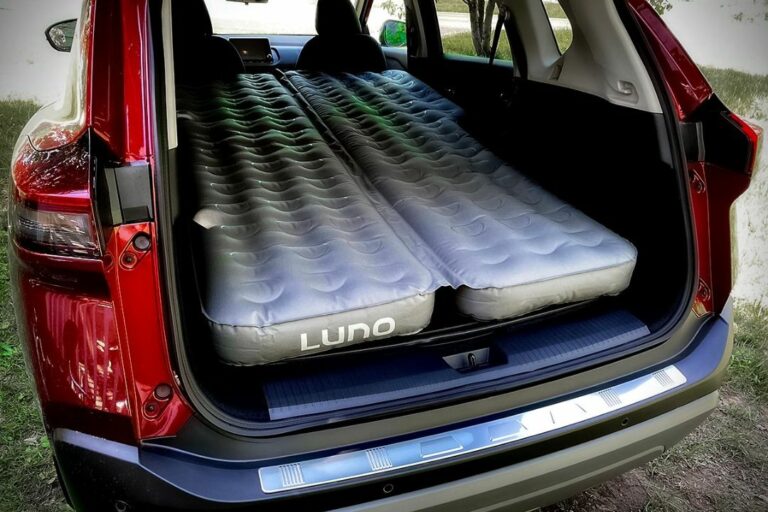Are Waterbeds Good for Your Back?
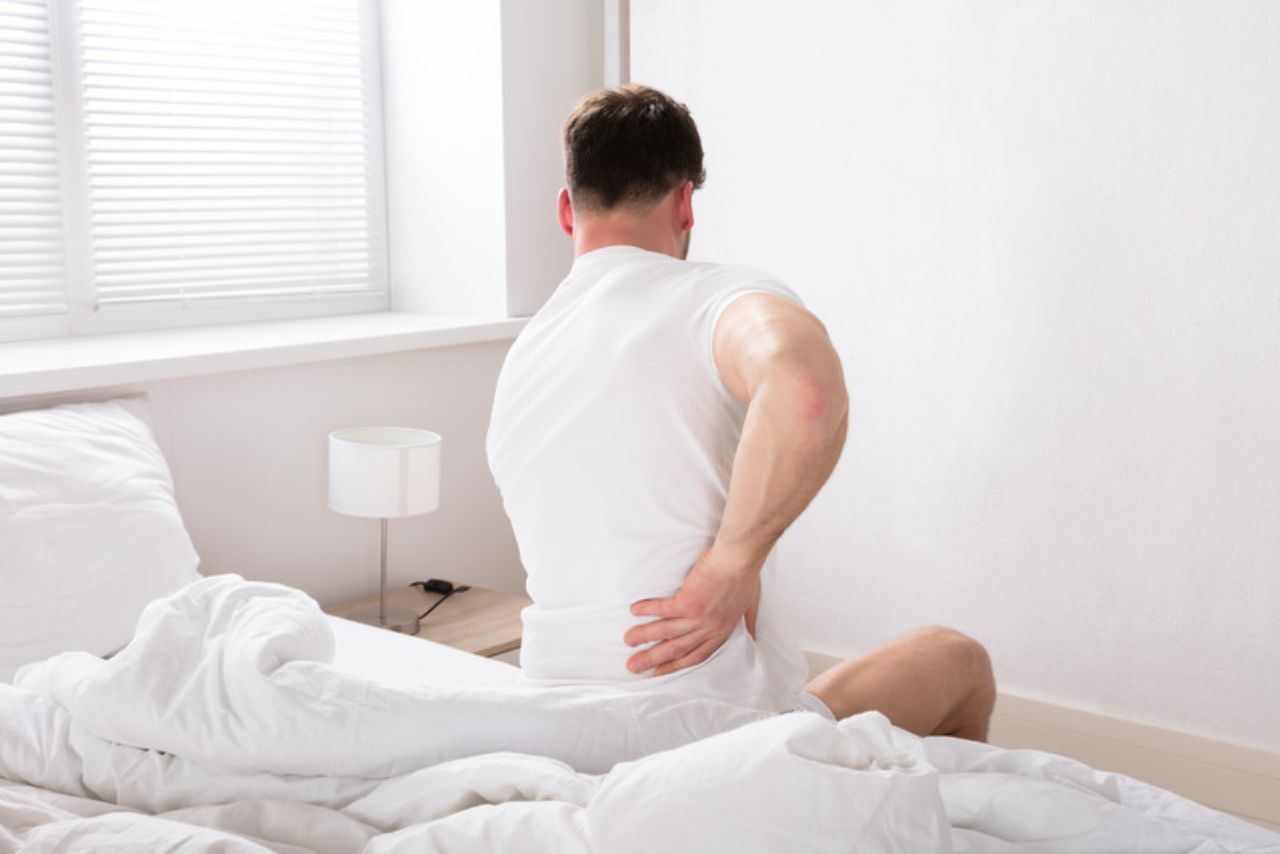
Are Waterbeds Good for Your Back?
Waterbeds may not be the best choice for people with back pain as they can lack the necessary support and proper spinal alignment, potentially exacerbating discomfort. Mattresses with more adjustable and supportive materials are often recommended for back health.
While some people swear by the therapeutic benefits of waterbeds, others find them uncomfortable and unsupportive.
The unique feature of waterbeds is their ability to distribute body weight evenly, relieving pressure points and reducing stress on joints.
This can be beneficial for individuals with back pain or conditions like arthritis.
However, it’s important to note that not all waterbeds are created equal. The level of firmness and support provided by a water mattress varies depending on the type and quality of the bed.
Ultimately, whether a waterbed is good for your back largely depends on personal preference and individual needs.
It’s crucial to consider factors such as your specific back condition, sleeping habits, and comfort preferences before making a decision.
In this article, we will explore the potential benefits and drawbacks of using a waterbed for back health so that you can make an informed choice about what’s best for you.
What is a Waterbed?
A waterbed is a type of mattress that uses water as its primary support system instead of traditional springs or foam.
It consists of a large vinyl bladder filled with water, which provides the cushioning and contouring effects.
Here are some key points to understand about waterbeds:
- Water Mattress Types: There are two main types of water mattresses: hard-sided and soft-sided.
- Hard-Sided Waterbeds: These have a wooden frame surrounding the water mattress, providing stability.
- Soft-Sided Waterbeds: These feature a foam-filled cavity around the mattress, resembling a conventional bed.
- Temperature Control: Many modern waterbed models include built-in temperature control systems, allowing users to adjust the warmth according to their preferences. This can be particularly beneficial for those who prefer sleeping on warm surfaces or need therapeutic heat for certain conditions.
- Water Support System Advantages:
- Pressure Relief: The even distribution of body weight helps alleviate pressure points and reduces stress on joints.
- Spinal Alignment: A properly filled and positioned water mattress can provide excellent spinal alignment by conforming to the body’s natural curves.
- Customization: Users can adjust the level of firmness by adding or removing water from the bladder.
- Potential Disadvantages: While many people find comfort in sleeping on a waterbed, it’s important to consider potential downsides:
- Motion Transfer: Some individuals may experience disturbances when sharing a bed due to motion transfer caused by movement in one area affecting other parts of the mattress.
- Maintenance Requirements: Regular maintenance tasks such as treating and conditioning the vinyl coverings may be necessary to prolong its lifespan.
So, understanding what constitutes a typical waterbed is essential before evaluating whether it would be good for your back or not.
By considering factors like construction type, temperature control, and the advantages and disadvantages associated with water support systems, you can make a more informed decision about whether a waterbed is suitable for your needs.
How Do Waterbeds Work?
Waterbeds are a unique type of mattress that provide support and comfort through the use of water.
Here’s how they work:
- Water-filled chambers: Waterbeds consist of one or more vinyl chambers filled with water. These chambers can be either free-flowing or waveless, depending on the desired level of motion.
- Heating system: Most waterbeds come equipped with a heating system to regulate the temperature of the water. This ensures a comfortable sleeping environment throughout the year.
- Support and pressure relief: The key benefit of a waterbed is its ability to contour to your body’s shape, providing optimal support and pressure relief for your back and joints. As you lie down, the weight distribution evenly displaces across the surface, reducing stress on specific areas.
- Motion isolation: Contrary to popular belief, modern waterbeds have improved motion isolation features that minimize disturbances caused by movement during sleep. Waveless systems or fiber-filled baffles help dampen any waves created when one person moves.
- Customizable firmness: One advantage of owning a waterbed is that it allows you to adjust its firmness level according to your preferences using an air valve or adding/removing water from the chamber(s).
- Hygienic considerations: To maintain hygiene standards, it is recommended to use specialized conditioners in the water periodically to prevent bacterial growth within the mattress.
- Durability and maintenance: With proper care, including regular cleaning and inspections for leaks or damage in seams or valves, a high-quality waterbed can last for many years.
In summary, waterbeds work by utilizing fluid support rather than traditional spring-based systems found in other mattresses types like memory foam or innerspring beds.
They offer customizable firmness levels while providing excellent support and pressure relief for your back due to their ability to contour to your body’s shape.
Additionally, modern waterbeds have advanced features such as motion isolation and heating systems for an enhanced sleeping experience.
Remember to maintain proper hygiene and perform routine maintenance checks to ensure the longevity of your waterbed.
The Relationship Between Waterbeds and Back Pain:
Waterbeds have long been a popular choice for those seeking a comfortable sleep surface.
But when it comes to back pain, many wonder if waterbeds are a good option.
Let’s explore the relationship between waterbeds and back pain:
- Support: One of the key factors in choosing a bed is its ability to provide adequate support to your spine. Waterbeds offer unique support by contouring to your body’s shape. This can help alleviate pressure points and distribute weight evenly, potentially relieving back pain.
- Alignment: Maintaining proper spinal alignment while sleeping is crucial for minimizing back pain. Some studies suggest that waterbeds may promote natural alignment by allowing the spine to rest in its neutral position during sleep.
- Pressure Relief: Back pain often stems from excessive pressure on certain areas of the body, such as the lower back or hips. The buoyancy of water helps reduce pressure points, providing relief for those suffering from chronic back discomfort.
- Motion Isolation: Sharing a bed with a partner who tosses and turns can worsen existing back issues or cause new ones to develop. Waterbeds excel at isolating motion, meaning you’re less likely to be disturbed by your partner’s movements throughout the night.
- Personal Preference: It’s important to note that individual preferences play a significant role in determining what type of mattress works best for each person’s unique needs and comfort level – including their experience with back pain.
While some individuals find relief using waterbeds for their backs, others may not experience any noticeable difference or even find them uncomfortable due to personal preferences or specific conditions they might have.
In conclusion, waterbeds offer potential benefits like support, alignment, pressure relief, and motion isolation that could alleviate back pain for some individuals; however, it ultimately depends on personal preference and individual circumstances whether they are a suitable choice for relieving back pain.
Note: It’s always recommended to consult with a healthcare professional or orthopedic specialist before making any significant changes to your sleep environment if you’re experiencing chronic back pain.
Advantages of Sleeping on a Waterbed:
Sleeping on a waterbed can offer several advantages for your back and overall sleep quality.
Here are some benefits of choosing a waterbed:
- Pressure Relief: Waterbeds distribute your body weight evenly, reducing pressure points that can cause discomfort and pain in traditional mattresses. This can be especially beneficial for individuals who suffer from back pain or joint problems.
- Spinal Alignment: The flexible nature of waterbeds allows them to contour to the shape of your body, providing excellent support for your spine’s natural alignment. This alignment helps minimize strain on your back during sleep, promoting better spinal health over time.
- Customizable Firmness: Unlike traditional mattresses with fixed firmness levels, waterbeds offer adjustable firmness options by simply adjusting the amount of water inside the mattress. This customization allows you to find the ideal level of support and comfort for your specific needs.
- Motion Isolation: Waterbeds excel at isolating motion transfer between sleeping partners due to their unique design. Each side of the bed contains its own individual bladder filled with water, minimizing disturbances caused by movement during sleep.
- Temperature Regulation: Many modern waterbed models come equipped with temperature control features that allow you to adjust the warmth or coolness according to personal preference throughout different seasons or climates.
- Longevity and Durability: With proper care, a well-made waterbed has the potential to last longer than traditional mattresses made from foam or springs since they don’t experience sagging or coil damage over time.
Disadvantages of Sleeping on a Waterbed:
Sleeping on a waterbed may have its advantages, but it also comes with some potential drawbacks.
Here are the disadvantages to consider before deciding if a waterbed is good for your back:
- Lack of Support: Unlike traditional mattresses that offer firmness and support, waterbeds can lack proper spinal alignment. The excessive sinkage caused by the weight of your body resting on the water-filled mattress may lead to poor sleep posture and strain your back muscles.
- Motion Transfer: One significant disadvantage of waterbeds is their susceptibility to motion transfer. Any movement made by your partner during sleep can cause ripples or waves in the bed, disturbing your sleep and potentially exacerbating any existing back pain.
- Temperature Control: Maintaining an optimal sleeping temperature can be challenging with a waterbed. Since these beds retain heat, they may make you feel too warm during hotter seasons or climates unless equipped with advanced cooling technology.
- Maintenance and Repairs: Water leaks or punctures pose another concern when it comes to owning a waterbed. If not promptly addressed, even minor leaks can damage flooring or furniture in your bedroom while requiring costly repairs.
- Weight and Mobility Issues: Filling up a waterbed requires gallons upon gallons of liquid, making them extremely heavy compared to other types of mattresses. This weight makes moving or adjusting the bed more difficult than traditional options.
- Limited Availability: Due to decreased popularity over time, finding replacement parts or accessories for older models might prove challenging as fewer retailers carry them.
- Allergy Concerns: Some people may experience allergies due to dust mites or mold that could accumulate inside certain types of older-style vinyl covers used with some waterbeds.
While sleeping on a waterbed offers unique sensations and benefits for some individuals, it’s important to carefully evaluate these potential disadvantages to determine if it’s the right choice for your back health and overall sleep quality.
Tips for Choosing the Right Waterbed for Your Back:
When it comes to choosing a waterbed that is good for your back, there are some key factors to consider.
Here are some tips to help you make an informed decision:
- Level of Firmness: Opt for a waterbed with adjustable firmness levels. This allows you to customize the support based on your individual needs and preferences.
- Support System: Look for a waterbed that offers adequate lumbar support. A good support system can help alleviate pressure points and promote proper spinal alignment.
- Water Mattress Type: Two common types of water mattresses are available: free-flow and waveless mattresses. Free-flow mattresses provide minimal resistance and movement, while waveless mattresses come with additional layers or fiber inserts to reduce motion transfer.
- Mattress Size: Consider the size of the mattress based on your body type and sleeping habits. Ensure that it provides enough space for comfortable movement while still offering optimal back support.
- Quality Materials: Choose a high-quality water mattress made from durable materials like vinyl or rubberized fabric. This ensures longevity and reduces the risk of leaks or punctures.
- Temperature Control: Some advanced waterbeds have temperature control features, allowing you to adjust the bed’s warmth according to your preference. Maintaining an optimal temperature can aid in relieving muscle tension.
- Trial Periods & Warranty: Check if the manufacturer offers trial periods or warranties as these give assurance about product quality and customer satisfaction guarantees.
- Consultation & Expert Advice: If necessary, consult with healthcare professionals such as chiropractors or orthopedic specialists who may be able to provide recommendations tailored specifically towards addressing back-related concerns when selecting a suitable waterbed.
Remember, everyone’s back needs differ so what works well for one person might not work as effectively for another individual’s specific condition.
Exercises to Relieve Back Pain:
When it comes to relieving back pain, incorporating specific exercises into your routine can make a significant difference.
Here are some exercises that can help alleviate discomfort and strengthen your back:
- Stretching: Stretching exercises help increase flexibility and relieve tension in the muscles supporting the spine. Consider including these stretches in your daily routine:
- Hamstring Stretch: Lie on your back with one leg extended. Slowly raise the other leg towards the ceiling while keeping it straight. Hold for 20-30 seconds, then switch legs.
- Child’s Pose: Start on all fours, then sit back onto your heels while extending your arms forward along the floor. Relax into this position for about 30 seconds.
- Core Strengthening: A strong core provides stability and support to reduce strain on the lower back muscles. Try these core-strengthening exercises:
- Plank: Begin in a push-up position with forearms resting on the ground instead of hands. Hold this position for as long as you comfortably can.
- Superman Exercise: Lie face down with arms extended overhead and legs straight out behind you. Lift both arms and legs off the ground simultaneously, hold briefly, then lower them down.
- Low-Impact Aerobic Activities: Engaging in low-impact aerobic activities helps improve blood circulation, maintain a healthy weight, and promote overall fitness without putting excessive stress on your back joints or discs.
4: Yoga or Pilates: These practices focus on strengthening core muscles, improving flexibility, and promoting relaxation through controlled movements and breathing techniques.
Remember to consult with a healthcare professional before starting any exercise program if you have existing back conditions or concerns about certain movements exacerbating your pain.
By incorporating stretching exercises, core strengthening routines, low-impact aerobic activities like swimming or cycling, and practices such as yoga or Pilates into your routine, you can reduce back pain and improve overall spine health.
Conclusion: Are Waterbeds Good for Your Back?
In conclusion, waterbeds may not be the best choice for individuals looking to alleviate back pain or improve their spinal alignment.
While some people may initially find relief from the buoyancy and support provided by a water mattress, there are several factors to consider before investing in one.
- Firstly, waterbeds lack adequate firmness and support that is necessary for maintaining proper spinal alignment during sleep. The excessive sinking feeling can result in poor posture and strain on the back muscles over time.
- Additionally, the motion transfer caused by movement on a waterbed can disrupt sleep quality and contribute to further discomfort or pain. This can be especially problematic for those who share a bed with a partner.
Ultimately, it is important to consult with a healthcare professional or orthopedic specialist when seeking solutions for back pain management. They can provide personalized recommendations based on individual needs and conditions.

